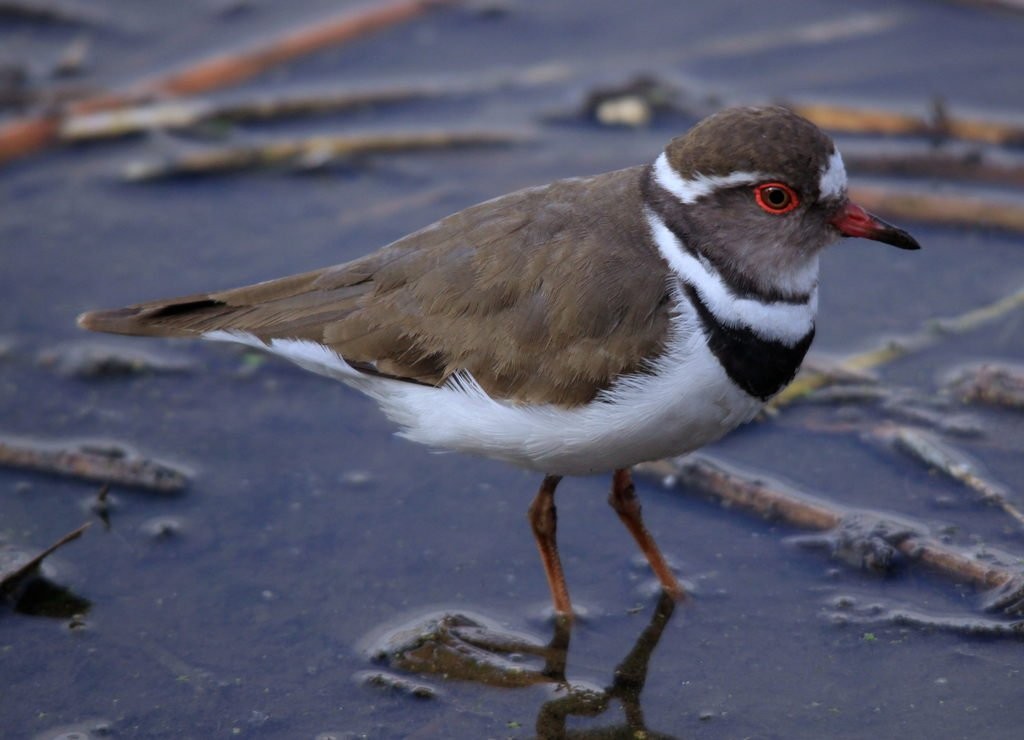Three-banded Plover
A species of Typical plovers Scientific name : Charadrius tricollaris Genus : Typical plovers
Three-banded Plover, A species of Typical plovers
Botanical name: Charadrius tricollaris
Genus: Typical plovers
Content
Description General Info
Description
The adult three-banded plover is 18 cm in length. It has long wings and a long tail, and therefore looks different from most other small plovers in flight, the exception being the closely related Forbes's plover that replaces it in west Africa. The adult three-banded plover has medium brown upperparts, and the underparts are white except for the two black breast bands, separated by a white band, which give this species its common and scientific names. The head is strikingly patterned, with a black crown, white supercilia extending from the white forehead to meet on the back of the neck, and a grey face becoming brown on the neck. The eye ring and the base of the otherwise black bill are red. The Madagascan subspecies C. t. bifrontatus has a grey band between the bill and the white forehead, and the sides of the head are grey. A genetic study reported genetic differentiation between Madagascar and the mainland population. The sexes are similar, and the juveniles of the nominate and Madagascan subspecies also resemble the adults, although the forehead is brownish for a short time. This species is distinguished from the larger, darker Forbes's plover in that the latter species has a brown forehead and lacks a white wingbar. 
Size
18 cm
Life Expectancy
10 years
Nest Placement
Ground
Feeding Habits
Three-banded Plover consumes a range of invertebrates, including terrestrial and aquatic insects, larvae, crustaceans, molluscs, and worms. Three-banded Plover forages at water's edge, often using foot-trembling to locate prey, and is active both day and night. Typically solitary, three-banded Plover can sometimes be seen in small flocks.
Habitat
Three-banded Plover typically inhabits the edges of inland freshwater bodies such as lakes, rivers, and streams, often on firm, gravelly, or sometimes muddy terrains. They are also found at artificial waterbodies, coastal lagoons, and less saline areas of estuaries. While they sometimes frequent coastal regions, they prefer inland wetlands, including man-made environments like sewage tanks and wet rice fields.
Dite type
Insectivorous
General Info
Feeding Habits
Bird food type
Species Status
Not globally threatened.
Scientific Classification
Phylum
Chordates Class
Birds Order
Shorebirds Family
Plovers Genus
Typical plovers Species
Three-banded Plover 